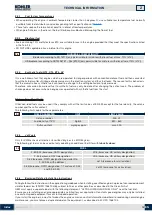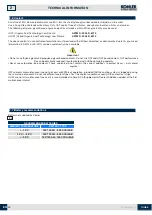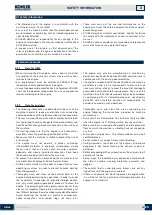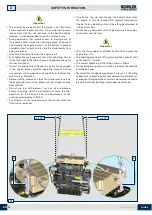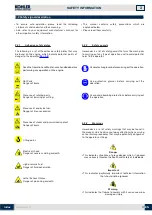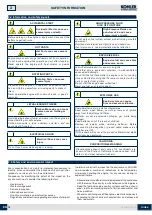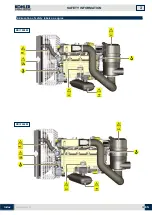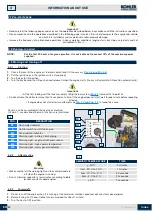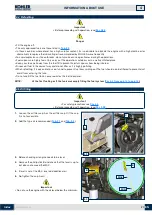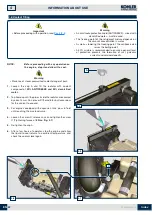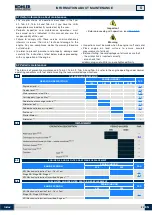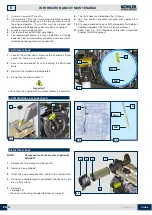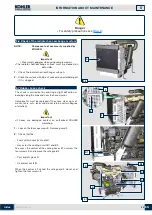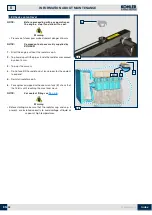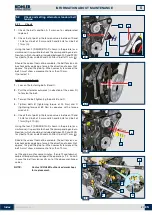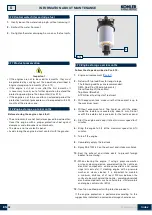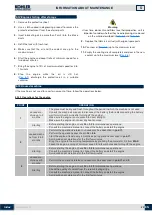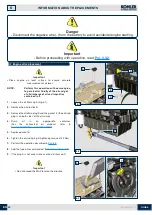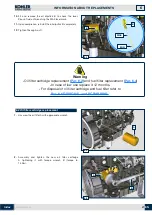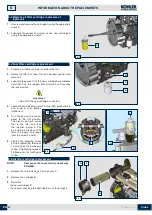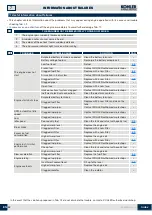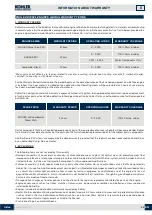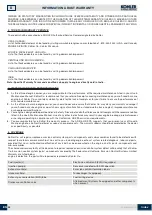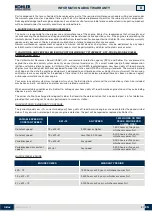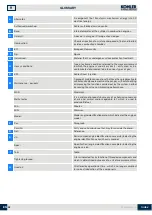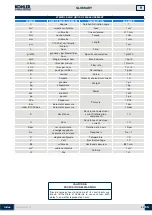
5
_14
.1
27
p
G
10 mm
5.13
B
B
E
E
C
D
5.10
5.12
A
P
F
H
5.11
p
EN
5.9
Check and setting alternator standard belt
tension
5.9.1
Check
1.
Check the belt condition A if worn out or deteriorated,
replace it.
2.
Check that at point p the tension value is between 70 and
75 Hz for V-belt of 9 mm and 80 and 85 Hz for V-belt of
17 mm (H).
Using the tool F (DENSO BTG-2) shown in the picture (or a
similar one) it is possible to check the corresponding value in
Newton, (which should be) included between 200 and 230 N
for V-belt of 9 mm and 350 and 450 N for V-belt of 17 mm (H).
Should the correct tool not be available, the belt tension can
be checked by applying a force in the direction of arrow G of
approx' 10kg on the point p. When correctly tensioned the
belt A must show a movement of less than 10 mm.
If not adjust it.
5.9.2 Adjustment
1.
Loosen the fastening bolts B and C.
2.
Pull the alternator outwards (in direction of the arrow D),
to tension the belt.
3.
Tension the belt tightening the bolts B and C.
4.
Tighten bolts B (tightening torque of 25 Nm) and C
(tightening torque of 69 Nm) in sequence with a torque
wrench E.
5.
Check that at point p the tension value is between 70 and
75 Hz for V-belt of 9 mm and 80 and 85 Hz for V-belt of
17mm (Fig. 5.10) (H).
Using the tool F (DENSO BTG-2) shown in the picture (or a
similar one) it is possible to check the corresponding value in
Newton, (which should be) included between 200 and 230 N
for V-belt of 9 mm and 350 and 450 N for V-belt of 17 mm (H).
Should the correct tool not be available, the belt tension can
be checked by applying a force in the direction of arrow G of
approx' 10kg on the point p. When correctly tensioned the
belt A must show a movement of less than 10 mm.
Let the engine run for some minutes, then let it cool down at
ambient temperature and repeat the operations 2, 3, 4 and 5
in case the belt tension results out of the above mentioned
values.
NOTE:
Contact KOHLER authorised workshops
for replacement.
ED0053029510
Index

